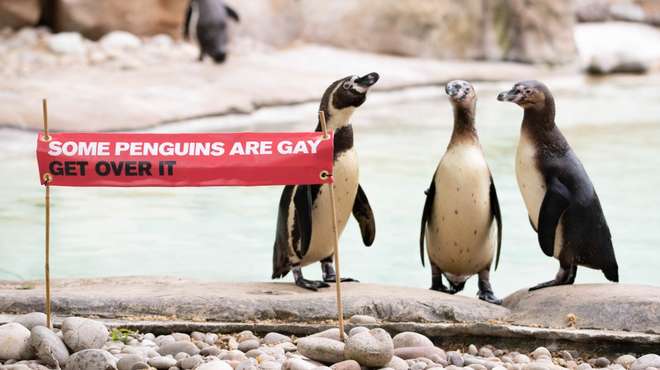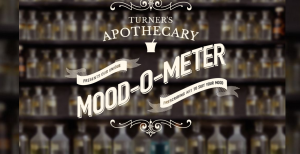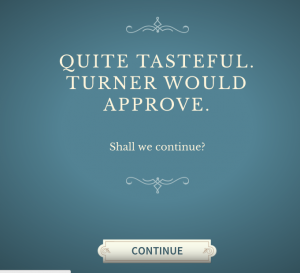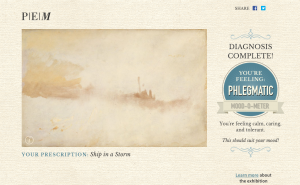
Over and over again, zoos and aquariums around the world are making headlines for their same-sex penguin couplings. One of the most iconic couples was Roy and Silo, two male chinstrap penguins who began performing mating rituals at the Central Park Zoo in 1998. After successfully incubating a rock and then a dummy egg, zookeepers decided to give the loving couple a real, fertilized egg. Roy and Silo hatched a baby, a female penguin named Tango. Tango then grew up to form a partnership with another female penguin named Tanuzi.

The list of gay penguin couples goes on and on and spans a wide range of species. Harry and Pepper were a pair of Magellenic penguins at the San Francisco Zoo. Sphen and Magic are a pair of male Gentoo penguins at SEA LIFE Aquarium in Sydney who hatched their first chick in 2018. Electra and Viola, also Gentoo penguins, are raising a chick at the L’Oceanogràfic in Valencia, Spain. At Zoo Berlin, two King penguins named Skipper and Ping have been trying to become fathers, unfortunately with no luck. Ronnie and Reggie are a pair of Humboldt penguins in London. In the Netherlands, a gay African penguin couple recently stole an egg from a lesbian penguin couple. The list goes on. Even in Parks and Rec, Leslie Knope hosts a wedding for two male penguins at the Pawnee Zoo.
The lives of male and female penguins are not as different from each other as we may expect. Regardless of sex, a parent’s responsibilities are similar—both invest equally in raising their chick. Aside from reproductive barriers, there is no reason why same-sex penguin couples cannot be successful parents. Penguins often lay more than one egg, though only one is likely to survive. In captivity, a same-sex penguin couple can adopt any extra eggs (though sometimes they steal eggs instead.) It’s likely that this happens in the wild too—though it’s harder to say. Visibly, male and female penguins really only differ in size, and not by much. That means it’s difficult to tell male and female penguins apart and even more difficult to identify any wild mating pairs as homosexual.
In late 2019, mothers Rocky and Marama hatched a baby Gentoo penguin at SEA LIFE Aquarium in London. This baby Gentoo made further waves after the aquarium announced that it would not be assigning the chick a gender. The chick is identified with a gender-neutral purple tag rather than the usual gendered name and color coded tag. Beyond that, the penguin’s life will be the same as any other penguin at the Aquarium. Gender means nothing to penguins, so why have we continuously assigned it to them? The General Manager of the aquarium, Graham McGrath comments that the decision to raise a genderless penguin is following an increase in conversations around human gender neutrality. I applaud SEA LIFE London for taking a look at their practices and making changes based on a more nuanced understanding of gender.

Besides, the animal kingdom is constantly subverting our expectations for both gender and sex. Male seahorses famously carry the young while they develop, and are the ones who eventually give birth. Bluehead wrasses all hatch as female. As they mature, some develop into males. These stories should be highlighted more. Most zoos and aquariums stick pretty exclusively to scripts around environmentalism and conservation. While those are incredibly important topics, I would like to see these institutions branch out. For example, a common argument against LGBTQIA+ rights is that “it’s not natural.” Zoos and aquariums have an opportunity to step in and say “actually, that’s not true.”



